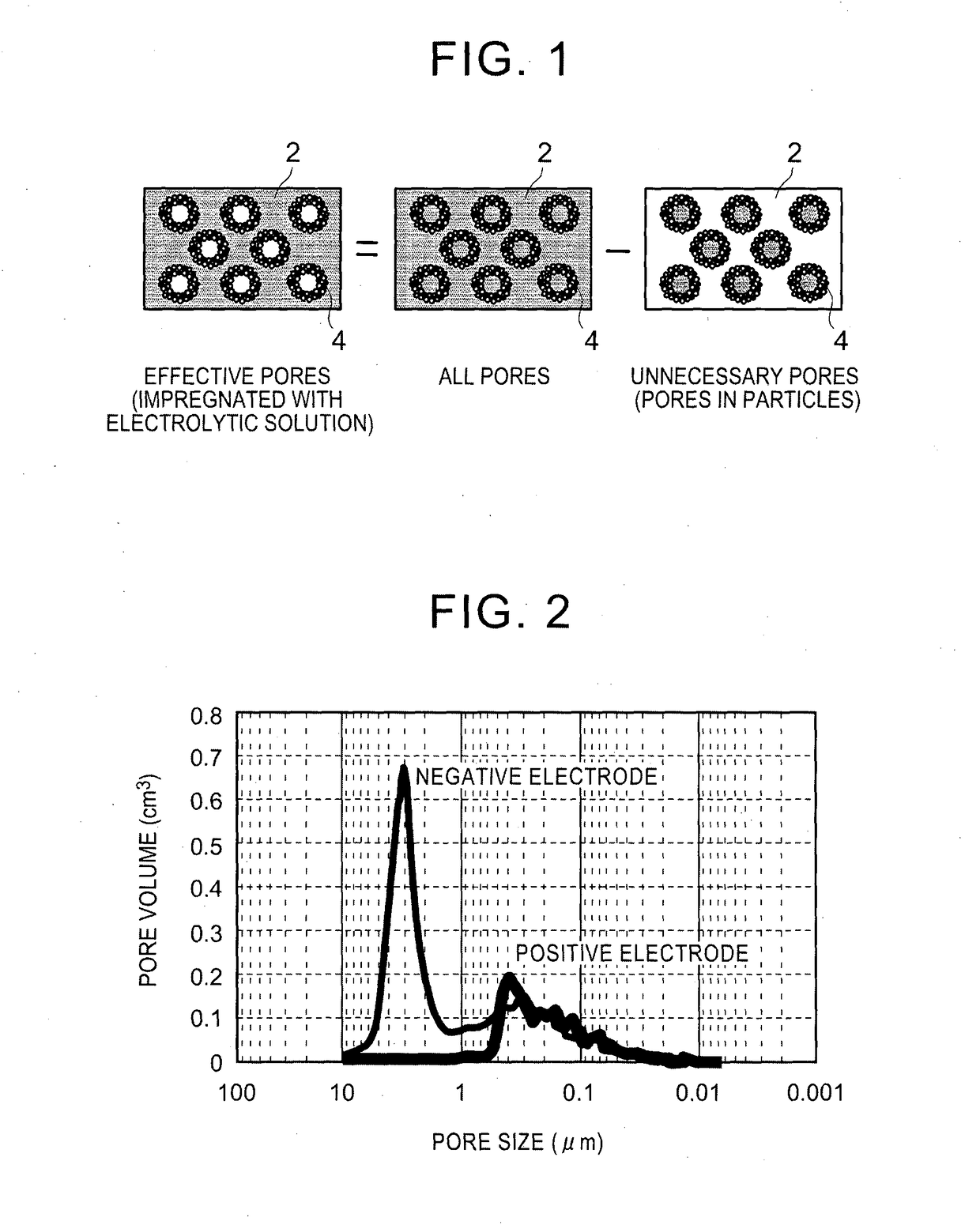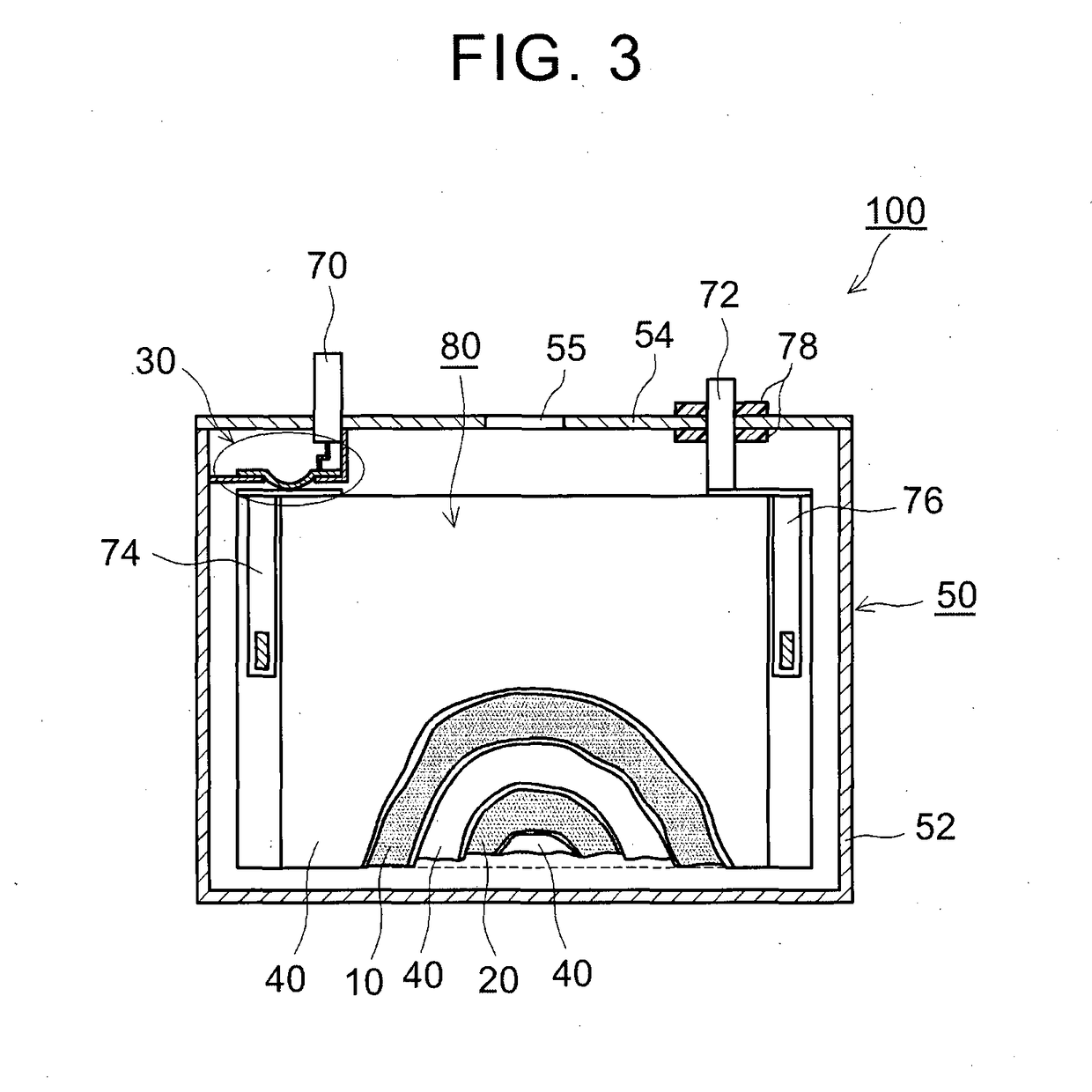Nonaqueous secondary battery
a secondary battery, non-aqueous technology, applied in the direction of batteries, cell components, sustainable manufacturing/processing, etc., can solve the problems of cid may malfunction, battery may be overcharged to higher than a predetermined voltage, cid is likely to malfunction, etc., to achieve accurate operation during overcharge, the effect of stably controlling the volume of “the unnecessary pores”
- Summary
- Abstract
- Description
- Claims
- Application Information
AI Technical Summary
Benefits of technology
Problems solved by technology
Method used
Image
Examples
Embodiment Construction
[0031]Preferred embodiments of the invention are described below. Matters (for example, components or a general manufacturing process of a battery which is not a characteristic of the invention) necessary to practice this invention other than those specifically referred to in this description may be understood as design matters based on the related art in the pertinent field for a person of ordinary skills in the art. The invention can be practiced based on the contents disclosed in this description and common technical knowledge in the subject field.
[0032]
[0033]A nonaqueous secondary battery according to an embodiment of the invention includes: an electrode body that includes a positive electrode, a negative electrode, and a separator; a nonaqueous electrolytic solution containing a gas producing agent; a battery case; and a pressure-operated current interrupt device (CID). A ratio (Vt / Cr) of a sum Vt (cm3) of pore volumes in the electrode body to a remaining space volume Cr (cm3) i
PUM
 Login to view more
Login to view more Abstract
Description
Claims
Application Information
 Login to view more
Login to view more - R&D Engineer
- R&D Manager
- IP Professional
- Industry Leading Data Capabilities
- Powerful AI technology
- Patent DNA Extraction
Browse by: Latest US Patents, China's latest patents, Technical Efficacy Thesaurus, Application Domain, Technology Topic.
© 2024 PatSnap. All rights reserved.Legal|Privacy policy|Modern Slavery Act Transparency Statement|Sitemap



